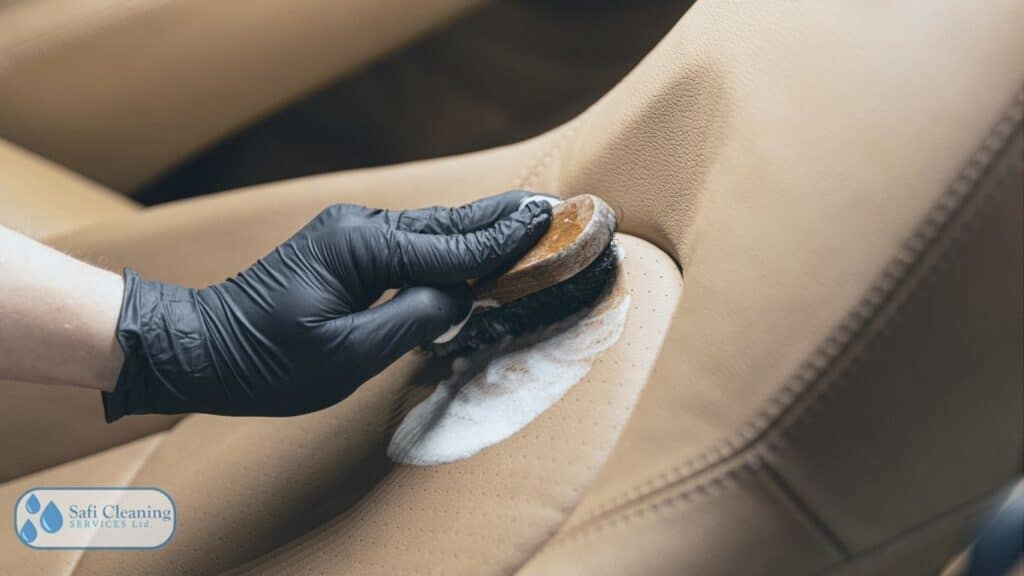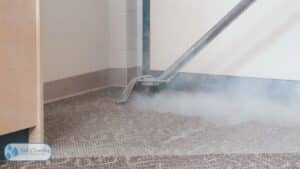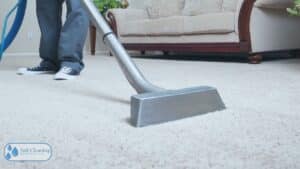Upholstery cleaning is an essential part of maintaining the cleanliness and appearance of your furniture. Over time, dirt, dust, and stains can accumulate on upholstery, making it look dull and unattractive. Regular cleaning not only improves the overall aesthetic of your furniture but also helps to prolong its lifespan. In this article, we will explore the different types of upholstery fabrics and the various cleaning methods that can be used to keep them looking their best.
Understanding the Different Types of Upholstery Fabrics
There are several common types of upholstery fabrics, each with its own unique cleaning needs. Cotton is a popular choice for upholstery due to its durability and versatility. However, it can be prone to staining and may require professional cleaning for deep stains. Linen is another natural fabric that is known for its breathability and softness. It is important to avoid using harsh chemicals on linen upholstery as they can damage the fabric.
Leather upholstery is a luxurious option that requires special care. It should be cleaned regularly with a mild soap and water solution, and conditioned to prevent drying out and cracking. Synthetic fabrics such as polyester and microfiber are also commonly used for upholstery due to their durability and stain resistance. These fabrics can usually be cleaned with a water-based solution or a mild detergent.
Preparing for Upholstery Cleaning
Before you begin cleaning your upholstery, it is important to gather all the necessary supplies. This may include a vacuum cleaner with upholstery attachments, a soft brush or cloth for dusting, mild detergent or upholstery cleaner, a bucket of warm water, and clean white cloths or paper towels for blotting stains.
It is also crucial to check for colorfastness before using any cleaning solution on your upholstery. This can be done by testing the solution on a small, inconspicuous area of the fabric and checking for any colour bleeding or fading. If there are no adverse effects, you can proceed with cleaning the rest of the upholstery.

Vacuuming and Dusting Upholstery
Regular vacuuming and dusting are essential for maintaining the cleanliness of your upholstery. This helps to remove loose dirt, dust, and allergens that can accumulate on the fabric. When vacuuming, use the upholstery attachment and gently run it over the surface of the furniture, paying special attention to crevices and seams where dirt can accumulate.
Dusting can be done using a soft brush or cloth. Simply wipe down the upholstery in a gentle sweeping motion to remove any surface dust. This should be done at least once a week to keep your upholstery looking fresh and clean.
Spot Cleaning Specific Stains
Accidents happen, and upholstery is prone to stains from food, drinks, pets, and other sources. It is important to address stains as soon as possible to prevent them from setting into the fabric. The method for removing stains will depend on the type of stain and the fabric of your upholstery.
For food stains, gently scrape off any excess residue with a spoon or dull knife. Blot the stain with a clean white cloth or paper towel, working from the outside in to prevent spreading. For wine stains, blot with a cloth soaked in cold water or club soda. For pet stains, blot with a cloth soaked in a mixture of mild detergent and water.
Using Water-Based Cleaning Solutions
Water-based cleaning solutions are a popular choice for cleaning upholstery as they are effective at removing dirt and stains without causing damage to the fabric. To use a water-based cleaning solution, mix a small amount of mild detergent or upholstery cleaner with warm water in a bucket. Dip a clean white cloth or sponge into the solution and wring out any excess liquid.
Gently blot the stained area with the damp cloth, working from the outside in to prevent spreading. Avoid scraping or rubbing too hard as this can damage the fabric. Once the stain has been removed, rinse the cloth in clean water and blot the area again to remove any soapy residue. Allow the upholstery to air dry completely before using it again.
Dry Cleaning Upholstery
Dry cleaning is another method that can be used to clean upholstery, especially for delicate fabrics or stubborn stains. Professional dry cleaners have specialised equipment and solvents that can effectively remove dirt and stains without using water. However, dry cleaning can be expensive and may not be suitable for all types of upholstery.
If you prefer to dry clean your upholstery at home, there are DIY dry cleaning kits available that contain a solvent and a spot cleaner. Follow the instructions on the kit carefully and test the solvent on a small, inconspicuous area of the fabric before proceeding. Use a clean white cloth or sponge to apply the solvent to the stained area, working from the outside in. Blot the area gently to remove the stain, and allow it to air dry completely.
Steam Cleaning for Deep Cleaning
Steam cleaning is a highly effective method for deep cleaning upholstery and removing embedded dirt and stains. Steam cleaners use hot water vapour to penetrate the fabric and loosen dirt, which is then extracted by a vacuum-like mechanism. This method is particularly useful for removing allergens and bacteria from upholstery.
To steam clean your upholstery, start by vacuuming or dusting the fabric to remove any loose dirt or debris. Fill the steam cleaner with water according to the manufacturer’s instructions, and allow it to heat up. Once it is ready, hold the steam cleaner about 6 inches away from the upholstery and move it in slow, overlapping strokes. Be careful not to saturate the fabric with too much moisture as this can cause damage. Allow the upholstery to air dry completely before using it again.
Avoiding Common Upholstery Cleaning Mistakes
When cleaning upholstery, it is important to avoid common mistakes that can cause damage to the fabric. One common mistake is using too much water, which can lead to over-wetting and potential mould or mildew growth. It is also important to avoid scrubbing or rubbing too hard as this can damage the fabric fibres.
Another mistake to avoid is using harsh chemicals or cleaning solutions that are not suitable for the fabric. Always check the manufacturer’s instructions or consult a professional before using any cleaning products on your upholstery. Finally, it is important to avoid using excessive heat when drying upholstery as this can cause shrinkage or fading.

Treating Leather Upholstery
Leather upholstery requires special care to maintain its appearance and longevity. It should be cleaned regularly with a mild soap and water solution, using a soft cloth or sponge. Avoid using abrasive materials or harsh chemicals as they can damage the leather.
To condition leather upholstery, use a leather conditioner or a mixture of equal parts vinegar and linseed oil. Apply the conditioner with a clean cloth, working it into the leather in circular motions. Allow the conditioner to penetrate the leather for about 10 minutes, then buff it off with a clean cloth.
Maintaining Upholstery for Longevity
In addition to regular cleaning, there are several steps you can take to maintain your upholstery and extend its lifespan. Avoid placing your furniture in direct sunlight as this can cause fading and damage to the fabric. Use window coverings or UV-protective films to block out harmful rays.
It is also important to rotate cushions and pillows regularly to distribute wear and tear evenly. This will help prevent sagging and prolong the life of your upholstery. Finally, consider using furniture covers or throws to protect your upholstery from spills, stains, and pet hair.
In conclusion, upholstery cleaning is an important part of maintaining the cleanliness and appearance of your furniture. By understanding the different types of upholstery fabrics and using the appropriate cleaning methods, you can keep your upholstery looking its best for years to come. Regular vacuuming and dusting, spot cleaning specific stains, and using water-based cleaning solutions are all effective ways to keep your upholstery clean and fresh. Additionally, dry cleaning and steam cleaning can be used for deep cleaning when necessary. By avoiding common upholstery cleaning mistakes and following proper maintenance techniques, you can extend the lifespan of your upholstery and enjoy its beauty for many years.
If you’re looking for the best methods to clean different types of upholstery fabrics, you might also be interested in exploring the incredible benefits of steam cleaning. Steam cleaning is a highly effective and eco-friendly method that can remove dirt, stains, and allergens from your upholstery without the use of harsh chemicals. It not only deep cleans your upholstery but also kills bacteria and eliminates odours. To learn more about the power of steam cleaning and how it can transform your upholstery, check out this informative article: Explore the Incredible Benefits of Steam Cleaning.
FAQs
What are the different types of upholstery fabrics?
There are various types of upholstery fabrics, including cotton, linen, wool, silk, leather, polyester, and microfiber.
What are the best methods for cleaning cotton and linen upholstery fabrics?
Cotton and linen upholstery fabrics can be cleaned using a mixture of warm water and mild detergent. It is important to avoid using hot water or harsh chemicals that can damage the fabric.
What are the best methods for cleaning wool and silk upholstery fabrics?
Wool and silk upholstery fabrics should be cleaned using a dry cleaning method. It is recommended to hire a professional cleaner for these types of fabrics.
What are the best methods for cleaning leather upholstery fabrics?
Leather upholstery fabrics can be cleaned using a mixture of warm water and mild soap. It is important to avoid using harsh chemicals or abrasive materials that can damage the leather.
What are the best methods for cleaning polyester and microfiber upholstery fabrics?
Polyester and microfiber upholstery fabrics can be cleaned using a mixture of warm water and mild detergent. It is important to avoid using hot water or harsh chemicals that can damage the fabric. It is also recommended to vacuum the fabric regularly to remove any dirt or debris.




